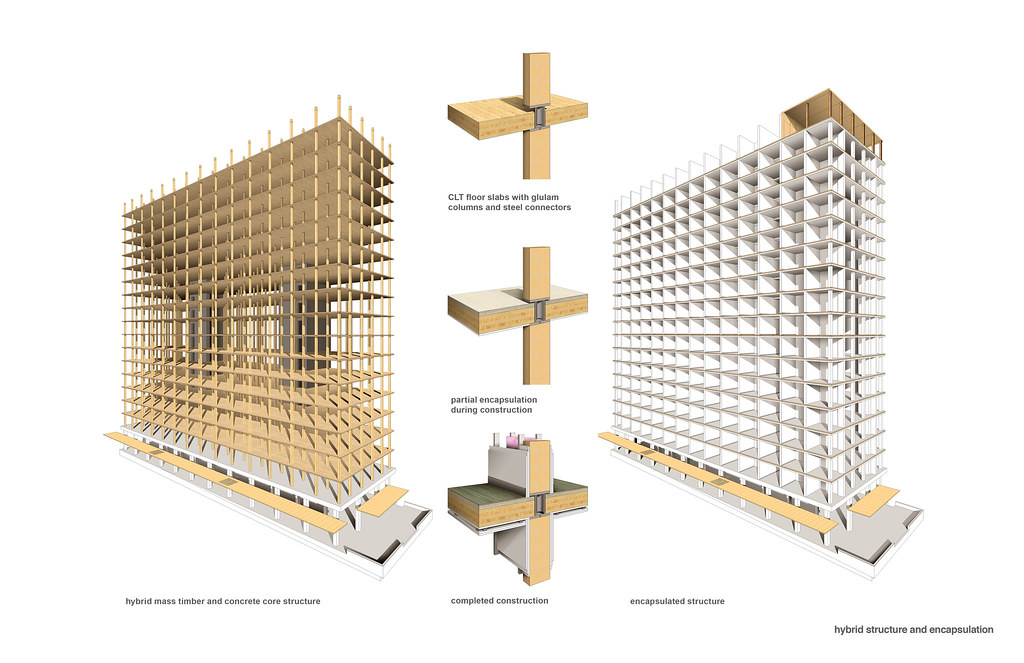The 2018 Code Conforming Wood Design (CCWD), a joint publication of the American Wood Council (AWC) and the International Code Council, is now available.
The free download summarizes key provisions related to the use of wood and wood products as they appear in the 2018 International Building Code (IBC). The publication compiles the occupancy and height and area provisions of the IBC for wood structures into one publication.
“The complexity and scope of the IBC makes it difficult for designers to know about all of the code provisions that affect the use of wood products in construction,” said Kenneth Bland, AWC vice president of codes & regulations, in a news release. “CCWD consolidates and provides additional explanation for many of those provisions to make wood building compliance with the IBC as simple as possible.”
Among the 2018 IBC code changes mentioned in the 2018 CCWD:
· Alternatives for protecting attics in buildings using an NFPA 13R automatic sprinkler system. This has specific application to construction designed in accordance with IBC Sections 510.2 and 510.4, based on the height of the roof above the lowest level of required fire department vehicle access.
· Provisions for a fire-watch during non-working hours when construction exceeds 40 feet in height above the lowest adjacent grade, if required by the fire code official. The International Fire Code contains additional fire watch provisions.
· Updated references to AWC’s 2018 National Design Specification for Wood Construction and 2018 Wood Frame Construction Manual.
Related Stories
| Sep 8, 2011
Water Safety in Buildings Guide Published by World Health Organization (WHO)
This WHO book provides guidance for managing water supplies in buildings where people may drink water, use water for food preparation, wash, shower, swim or use water for other recreational activities or be exposed to aerosols produced by water-using devices, such as cooling towers.
| Sep 7, 2011
NFPA Fire & Life Safety Conference in December
Presentations on recent Fire Protection Research Foundation projects, how September 11th and the Triangle Shirtwaist Factory fire affected high rise design, and a panel discussion on emerging code issues will be featured at the National Fire Protection Association (NFPA)’s Fire & Life Safety Conference on December 12-14 in Orlando, FL.The meeting will include more than 60 educational sessions in which participants can earn continuing education units (CEUs). Presentations will be led by NFPA staff experts and technical committee members, and will be organized in four tracks – building and life safety, detection and alarm, fire suppression, and codes and standards. For more information, visit www.nfpa.org/FLSCONF.
| Sep 1, 2011
Project Aims to Automate Code Compliance Assessment
FIATECH, a consortium of owners from the industrial, power, and retail markets that build large structures, launched a project this year to validate the use of automation technology for code compliance assessment, and to accelerate the regulatory approval process using building models. Long-term objectives include the development of an extensive, open-source rule set library that is approved by industry and regulatory bodies for use by technology developers and code officials.
| Sep 1, 2011
EPA Says Additional Lead Paint Cleaning Rules Not Necessary
The EPA has concluded that current Lead: Renovation, Repair, and Painting Program (LRRP) cleaning requirements and lead-safe work regulations are sufficient to protect the public from lead dust hazards. “Our members have been instrumental in contacting legislators to detail the detrimental impact of the current LRRP," says Richard Walker, American Architectural Manufacturers Association’s president and CEO. “This collective industry voice has prompted the EPA to make the responsible decision to refrain from adding further, unnecessary costs to homeowners under the current economic climate."http://www.aamanet.org/news/1/10/0/all/603/aama-commends-its-members-congress-for-vacating-lrrp-clearance-rule
| Aug 11, 2010
Best AEC Firms of 2011/12
Later this year, we will launch Best AEC Firms 2012. We’re looking for firms that create truly positive workplaces for their AEC professionals and support staff. Keep an eye on this page for entry information. +







